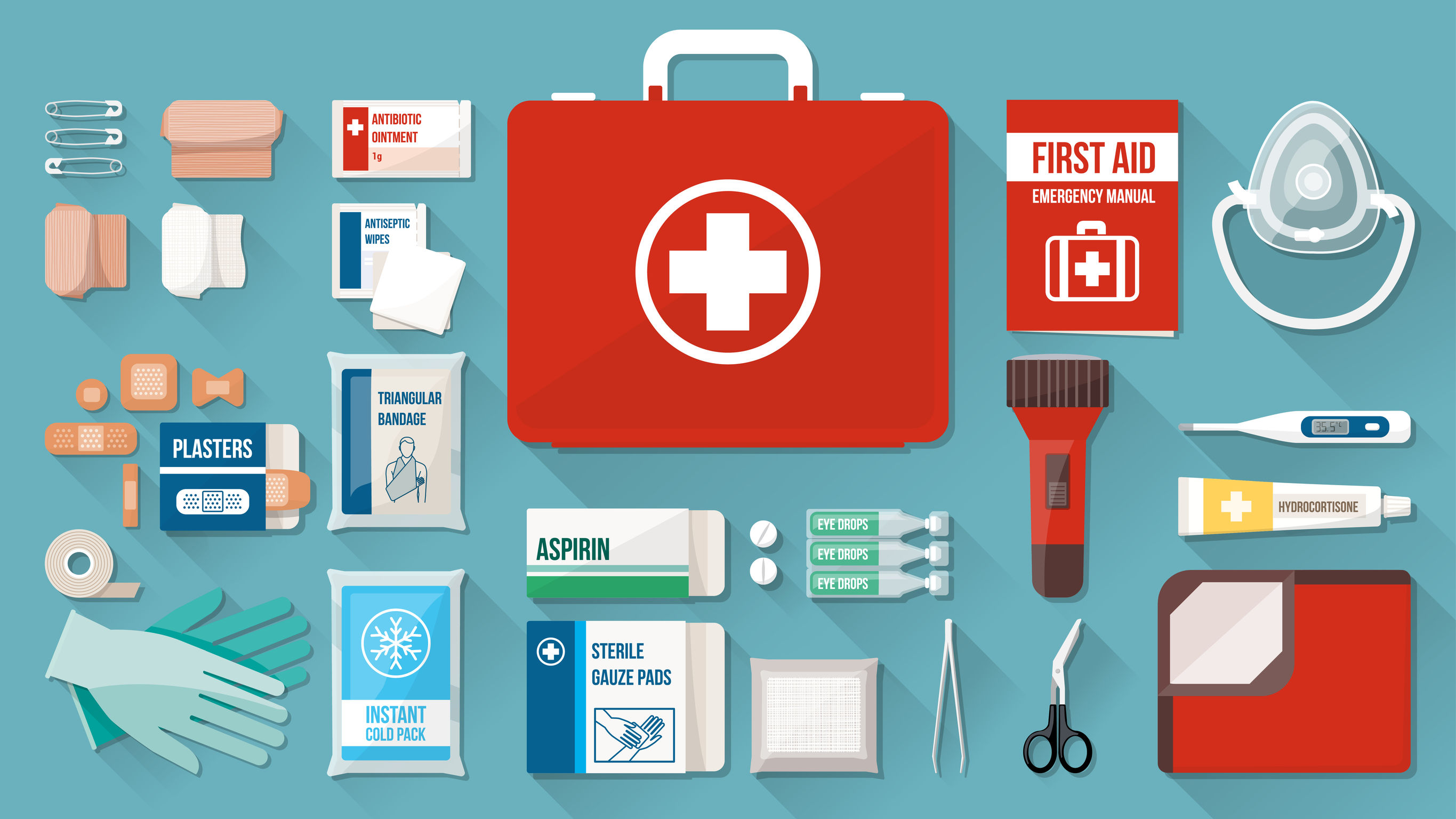When it comes to an emergency, speed is of the utmost importance. Any first aid or roadside kit you have should be in a very accessible location. For owners of travel trailers (conventional, expandable, fifth-wheel, pop-up, sport utility), that means not leaving the kits in the trailer. Always have them in the tow vehicle, even if you’ve already set up camp.
Even better, have more than one of each type of kit – for the trailer and for the car or tow vehicle. This strategy is helpful for when the two might be separated. You don’t want the kit to be in the wrong place. For owners of Type B motorhomes and Type C motorhomes, just make sure your kit is in a main storage area that is easily accessible.
Tell everyone, even young children, where the kit(s) is located in case they need to retrieve it in an emergency. As with any safety equipment, such as fire extinguishers, knowing exactly where to find what you need saves time, which helps to save lives and personal property.
You can put together your own kit by taking these lists to the pharmacy or store and picking everything out yourself, or you can purchase a pre-assembled kit. You may need to increase the quantities of certain items depending on the size of your family or travel party.
First Aid Kit
A first aid kit is a must-have item to help care for everyone in your family. Your first aid kit should include the items below, according to the American Red Cross.
- 25 adhesive bandages (assorted sizes)
- 2 absorbent compress dressings (5 x 9 inches)
- 1 adhesive cloth tape (10 yards x 1 inch)
- 5 antibiotic ointment packets (approximately 1 gram)
- 5 antiseptic wipe packets
- 2 packets of aspirin (81 mg each)
- 1 blanket (space blanket)
- 1 breathing barrier (with one-way valve)
- 1 instant cold compress
- 2 pair of nonlatex gloves (size: large)
- 2 hydrocortisone ointment packets (approximately 1 gram each)
- Scissors
- 1 roller bandage (3 inches wide)
- 1 roller bandage (4 inches wide)
- 5 sterile gauze pads (3 x 3 inches)
- 5 sterile gauze pads (4 x 4 inches)
- Oral thermometer (non-mercury/nonglass)
- 2 triangular bandages
- Tweezers
- First aid instruction booklet
As an extra layer of preparedness, know ahead of time the location of the nearest hospital, clinic, or emergency room. Sure we have our smartphones (The American Red Cross has a really cool app called First Aid that is free and might be worth mentioning. They also have an app, Pet First Aid, for pets, too!) and laptops, but if you happen to have a dead battery or no service, you’ll be wishing you had that information handy. For each destination, map out routes to the centers that offer medical treatment.
Roadside Kit
If you break down on the side of the road, can’t get the RV started, or have a flat tire, then you’ll need to have a roadside kit at the ready. Here are some items to include, from FitRV.com:
- Jumper cables (12′)
- Tow rope (6,500 lb capacity)
- Fix a Flat – tire repair
- Ice and snow window scraper
- Window breaker / seatbelt cutter tool
- Heavy duty work gloves
- Latex gloves
- Utility knife
- Duct Tape (50 yards)
- Emergency reflective triangle
- Emergency “EMERGENCY HELP” distress banner for windshield
- Blue tarp (5′ x 7′)
We’d also recommend adding:
- Flashlight
- Headlamp
- Shop cloths
- Bungee cords
- Screw drivers (flat head and Phillips)
- Cable ties
- Silicon repair tape (for leaking radiator hoses)
- Tire pressure gauge
- Pliers
- Electrical tape
- Rain poncho
- Reflective vest
Trail Kit
Of course you can’t bring everything along when you’re out on the trail or on a day trip. Designate one person to carry a backpack with all the emergency supplies or, if everyone is older, make sure everyone has their own mini emergency kit along. These items should be included in your kit:
- Whistle
- Mini flashlight
- Band-aids
- Ointment
- Antiseptic wipe packets
- Personal medications, such as inhalers or EpiPens
- Multi-tool or knife
- Space blanket
- Antihistamines and NSAIDs
- Compass
- Energy bars
- Water canteen
- Bandage roll
You may choose to have each kit in individual totes or duffle bags. For all large kits, make sure to organize your supplies and package “groups” together in Ziploc bags so that things are easy to find. Also check your kits regularly to make sure batteries are working, medications are not out of date, personal contact information is up to date, contact information for your primary medical provider is current, and a list of medications or health issues per family member is accurate. Make changes as necessary.
We want everyone to be safe on the road and during any outdoor activity. Be prepared by making sure you have these kits ready in case you need them.

